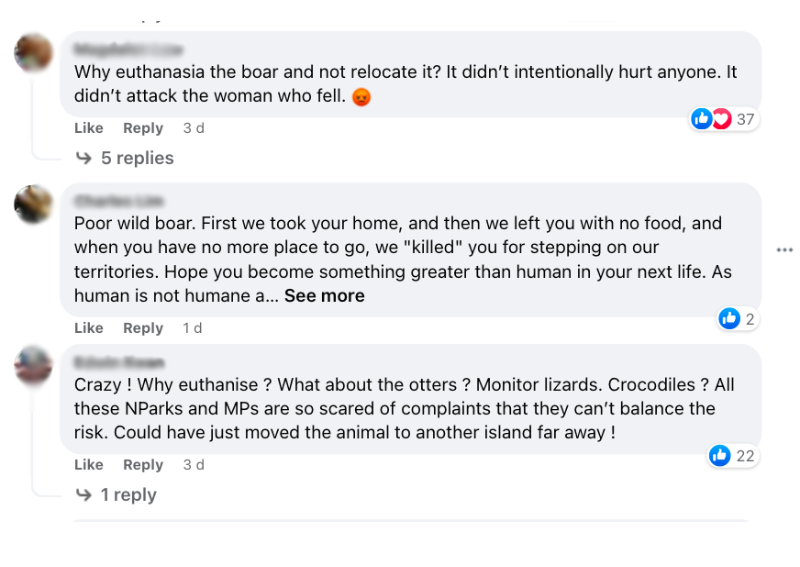To euthanise or to release the wild boar? NParks says putting an animal to sleep is the 'last resort'
The recent euthanasia of a wild boar in Yishun has once again raised this issue of whether or not wild animals should be culled.
On March 9, a wild boar wreaked havoc in Khatib Central, injuring three women before disappearing into Yishun Park.
The animal was caught 12 days later on March 20 and the National Parks Board (NParks) said then that the wild boar "was euthanised humanely for public safety".
In an interview with AsiaOne today (March 25), NParks' group director of wildlife management Adrian Loo explained that putting an animal down is really "the last resort".
"I think it's great that people care about our native wildlife, but it becomes a safety issue when a wild boar wanders off in a public area. That's why we had to act fast," he said.
Loo said that "extra care" was taken after its capture and he described how the boar was sedated before it was injected with another drug to put it to sleep.
This process was watched over by a vet on-site.
But is euthanising the wild boar really the only option to control its population?
While most netizens were relieved that the wild animal was caught, some questioned the decision to put it down, asking if other alternatives including trapping, neutering and releasing the animal have been considered.

When AsiaOne posed the question to Loo, he explained that relocating was simply not an option.
"If we bring the wild boar to another forest, he might just wander out. It was a risk that we couldn't take," he said.
On the search for the wild boar in Yishun earlier this month, he said that "it wasn't a hunt for the wild boar. It was really for public safety, as well as for our officers as well".
NParks' research in 2019 and 2020 showed that there were between 150 and 200 wild boars in the Central Catchment Nature Reserve, the largest of the nature reserves here, reported the Straits Times last year.
The agency carries out population surveys and research studies to understand the distribution of wild boars throughout Singapore's nature areas.
Due to a lack of natural predators, the wild boar population has increased rapidly and this may negatively affect Singapore's forests' regeneration.
So, detecting such wild boar hotspots are crucial to help NParks devise long term strategies to control their population in Singapore, said NParks.
One such example is removing oil palm trees that the wild boars rely on for food, said Loo.
"When the wild boar population adjusts to the level of food (that is available to them), their reproduction rate will go down," he added.
chingshijie@asiaone.com
Disclaimer: The copyright of this article belongs to the original author. Reposting this article is solely for the purpose of information dissemination and does not constitute any investment advice. If there is any infringement, please contact us immediately. We will make corrections or deletions as necessary. Thank you.







